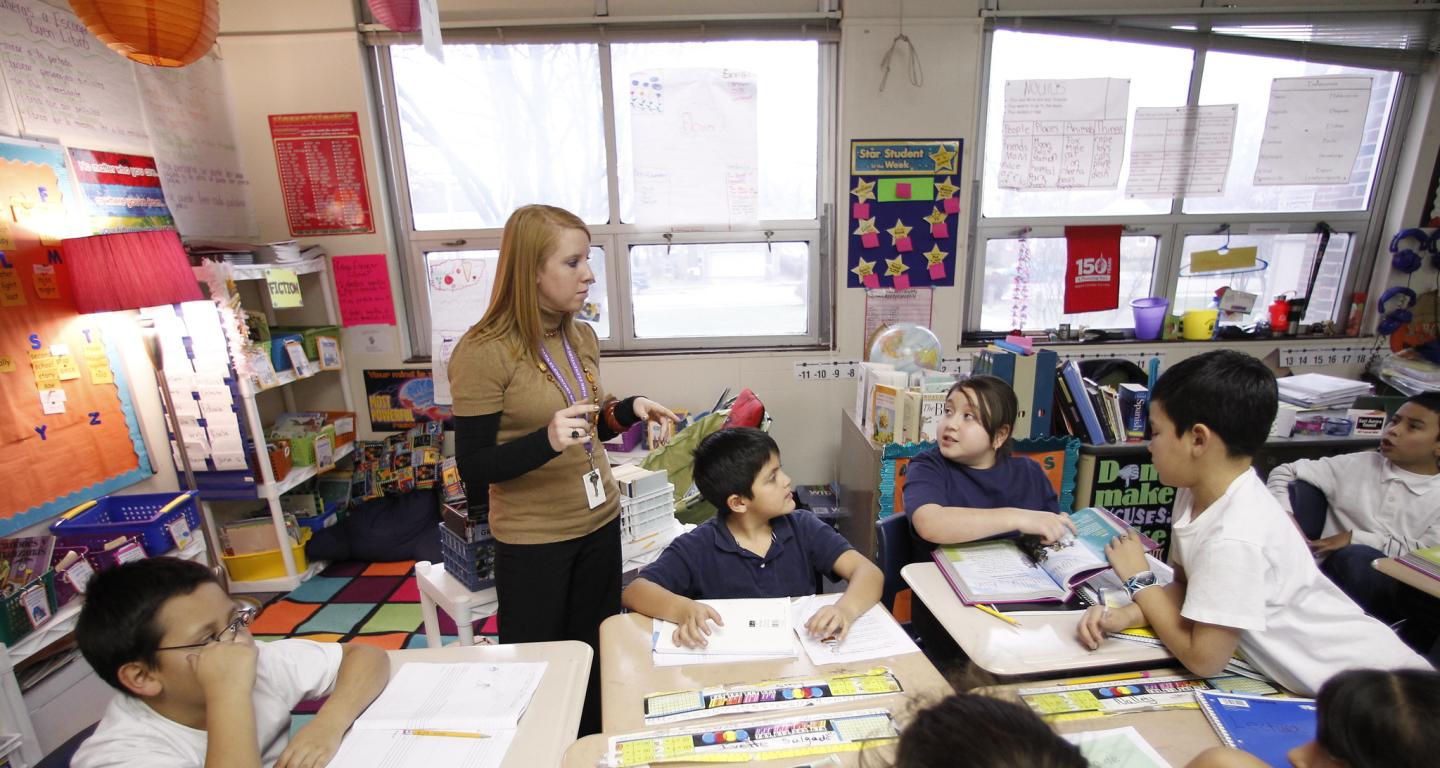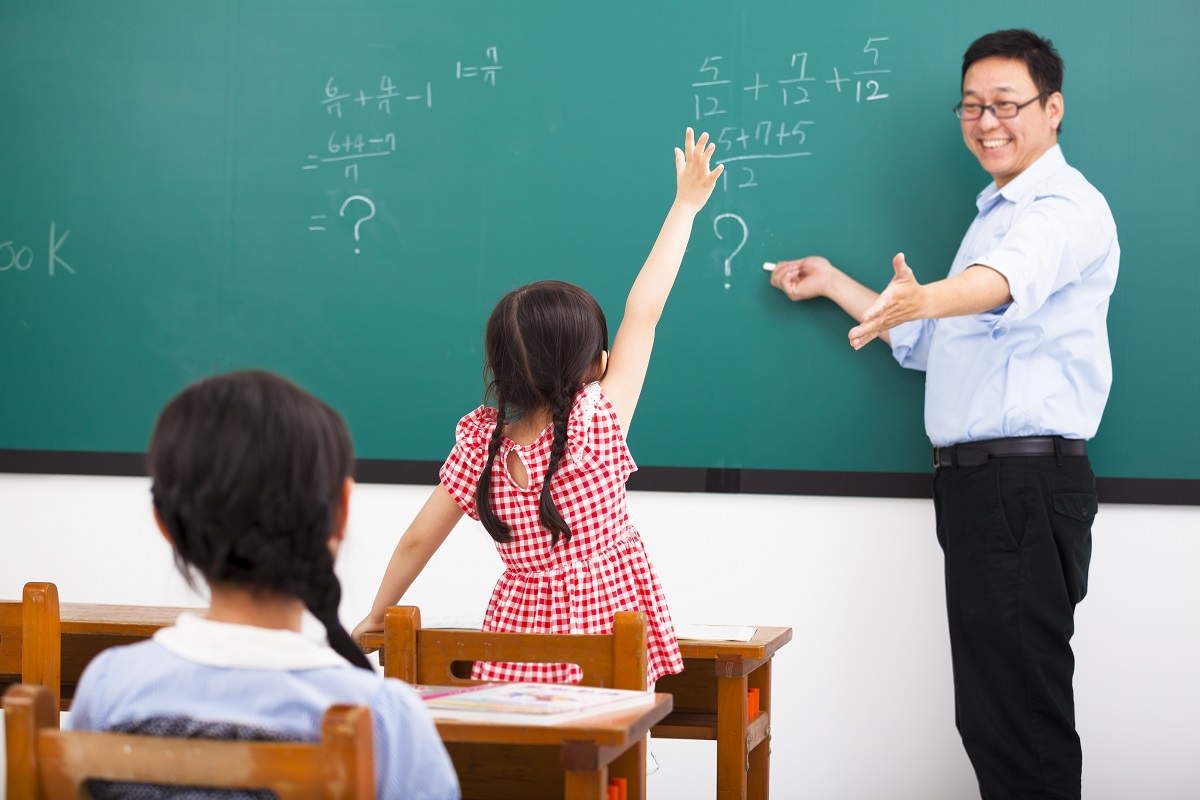Master Primary Science Concepts with Quality Tuition in Singapore
Master Primary Science Concepts with Quality Tuition in Singapore
Blog Article
A Comprehensive Overview to the Different Knowing Approaches in Key Scientific Research Instruction
The expedition of varied discovering techniques in primary scientific research instruction presents a possibility for teachers to improve student involvement and comprehension considerably. By taking a look at hands-on knowing techniques, inquiry-based methods, and joint techniques, we can identify effective techniques that satisfy different discovering designs. Additionally, the integration of modern technology and set apart direction plays a vital role in cultivating an inclusive atmosphere. However, the concern continues to be: how can these techniques be effectively carried out in the class to maximize their effect? The response hinges on a more detailed assessment of each strategy and its implications for teaching science.

Hands-On Knowing Strategies
Hands-on knowing methods play an essential duty in primary science instruction, engaging pupils in energetic expedition and experimentation. These methods enable students to connect straight with materials and phenomena, promoting a much deeper understanding of clinical concepts. By utilizing manipulatives, designs, and real-life experiments, instructors create an environment where students can observe, hypothesize, and check their concepts.
Such methods not just boost understanding yet also cultivate crucial thinking and analytical skills. When students join activities like building simple machines, planting seeds, or carrying out chemical responses, they are encouraged to ask questions and seek solutions through their own monitorings. This experiential method aids to demystify complex scientific concepts, making them more available and relatable.
In addition, hands-on learning promotes partnership among peers, as students typically operate in teams to carry out experiments or share findings. This synergy not only enriches their understanding experience yet also creates crucial social abilities. Eventually, incorporating hands-on methods in primary science guideline promotes a long-lasting love of understanding and curiosity concerning the environment, laying a strong structure for future academic searches in science and past.
Inquiry-Based Knowing
Inquiry-based understanding is an instructional strategy that encourages trainees to ask inquiries, check out sensations, and construct their very own understanding of clinical concepts. This approach shifts the emphasis from traditional teacher-led direction to an extra student-centered experience, where students take the campaign in their academic trip. By promoting inquisitiveness, inquiry-based knowing advertises deeper interaction with the material, enabling pupils to explore subjects in a significant context.
In technique, this method commonly involves hands-on experiments, observations, and important thinking activities that straighten closely with the scientific approach. Students are motivated to create theories, design investigations, and assess information, which cultivates important skills such as analytical and analytical thinking. The role of the teacher in this framework is to assist in expedition, guiding students with the questions procedure while motivating independent idea and collaboration.
Furthermore, inquiry-based discovering supports a feeling of possession over the discovering procedure, motivating trainees to go after knowledge actively. This method not only enhances understanding of scientific principles however additionally cultivates a lifelong love for knowing, furnishing students with the skills essential to browse an increasingly complex globe.
Collaborative Learning Approaches
Collaborative discovering approaches encourage trainees to engage in meaningful communications with peers, fostering a common obligation for their educational results. In key scientific research instruction, these techniques urge students to collaborate to discover clinical concepts, resolve troubles, and web link conduct experiments (primary science tuition Singapore). By taking part in team tasks, pupils can leverage diverse perspectives, enabling richer understanding and retention of scientific understanding
One secret element of collective discovering is the emphasis on communication skills. Students should verbalize their thoughts, listen actively to others, and negotiate concepts, every one of which are critical competencies in both scholastic and real-world contexts. This social communication not just boosts their understanding of scientific principles but also advertises synergy and dispute resolution skills.
When trainees see the value of their contributions within a team, they are a lot more most likely to take ownership of their learning journey. Overall, integrating collaborative understanding methods in main scientific research direction grows a dynamic discovering atmosphere that prepares students for future scholastic and social challenges.
Innovation Assimilation in Science
The combination of innovation in primary scientific research guideline enhances discovering experiences by providing cutting-edge devices and sources that support different training methodologies, including collective understanding - primary science tuition Singapore. Using electronic systems, simulations, and interactive applications allows students to involve deeply with clinical principles, promoting a more hands-on method to understanding
Online labs, for example, enable learners to carry out experiments securely and successfully, promoting inquiry-based knowing. These tools can imitate this article real-world scientific scenarios, permitting trainees to visualize complicated procedures that would be tough to duplicate in a standard classroom setting. Additionally, modern technology fosters communication and collaboration among students, as they can share findings and work with each other on jobs via on the internet platforms.
In addition, multimedia discussions and instructional video clips can improve lessons by providing to diverse learning styles, making abstract principles a lot more available. Data analysis devices also equip students to gather and interpret scientific data, strengthening important thinking abilities. Overall, the critical consolidation of modern technology in main scientific research instruction not just enhances interaction yet likewise prepares pupils for a technologically sophisticated culture, equipping them with crucial skills for future clinical undertakings.
Distinguished Guideline Strategies
Separated guideline strategies are necessary for resolving the diverse requirements of students in key science education. These methods make it possible for educators to tailor their mentor techniques to suit differing capacities, interests, and learning styles within the classroom. By utilizing set apart guideline, teachers can produce an inclusive atmosphere that promotes involvement and boosts understanding of scientific concepts.
One effective technique is to utilize versatile organizing, which enables trainees to work together with peers at comparable ability degrees or with varying viewpoints. This strategy urges peer understanding and advertises essential reasoning. In addition, supplying selections in tasks can encourage pupils, permitting them to pick tasks that reverberate with their rate of interests while still satisfying curricular objectives.
Moreover, including tiered jobs is one more important strategy. By making jobs with varying levels of intricacy, educators can ensure that all pupils are properly challenged, no matter their effectiveness. Using formative analyses to assess understanding more allows instructors to adjust their training techniques dynamically, guaranteeing that each student gets the support they require.
Eventually, applying separated instruction strategies in main science education and learning not only improves student learning results yet also grows a passion for science, preparing pupils for future academic quests.

Verdict
In summary, effective main science direction requires a complex strategy that incorporates hands-on learning, inquiry-based methods, and collaborative techniques. The integration of technology and distinguished instruction even more caters to diverse knowing styles, fostering you can try here an environment helpful to expedition and essential reasoning.
The expedition of varied knowing methods in primary scientific research guideline offers a chance for teachers to enhance student engagement and understanding significantly.Hands-on understanding strategies play an essential function in primary science guideline, involving trainees in active expedition and trial and error.Inquiry-based discovering is an instructional approach that urges trainees to ask questions, explore phenomena, and construct their very own understanding of scientific concepts.Joint knowing methods encourage trainees to engage in purposeful interactions with peers, cultivating a shared responsibility for their academic outcomes. On the whole, integrating collaborative understanding strategies in main scientific research direction cultivates a vibrant learning setting that prepares students for future scholastic and social challenges.
Report this page